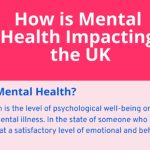It has recently been revealed by BBC news that the Met Police have made over 900 arrests for drivers allegedly breaking new ‘drug-driving’ limits since its introduction in March.
As a result of this rapid crackdown, drug awareness has arguably become more important to the average household as the laws not only cover illegal drug usage but many of the more common prescription drugs too.
Prescription drugs covered in the new law include:
– Clonazepam – prescribed to treat seizures or panic disorders
– Diazepam – used for anxiety disorders or muscle spasms
– Rohypnol – a sedative originally used for deep sedation
– Lorazepam – used to treat epilepsy
– Oxazepam – used to relieve anxiety
– Temazepam which affects chemicals in the brain
– Methadone – used in the treatment of heroin addiction and for pain relief
– Morphine or opiates which treat moderate to severe pain
The new law has set limits for the usage of these drugs only when they exceed prescribed doses, however it is recommended that drivers who take these prescription drugs carry proof so they can produce it at the roadside if needed.
The new regulations have also set a zero tolerance approach to any illegal drugs in the system, whether they are the cause of ‘accidental exposure’ or otherwise. These include cocaine, ketamine, MDMA, and methylamphetamine.
This zero tolerance position on drug-driving has been justified by government advisers on the basis that there was previously no safe drug driving limit. As such the penalties for drug driving are the same as they would be if you were caught over the drink-driving limit – if convicted you would receive a minimum 12-month driving ban, a criminal record, a hefty fine or up to 6 months in prison or even both in extreme cases.
To aid in the implementation of the new law, the Department for Transport has approved the use of the Securetec DrugWipe 3S. Its maker, Securetec, claims that its invention is “over 95% reliable”.








